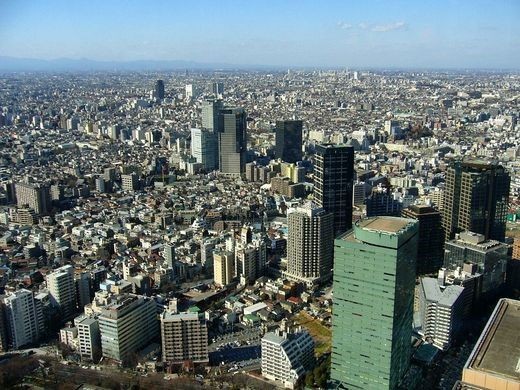Tokyo Cap-and-Trade Program
To reduce the city’s carbon footprint Tokyo, Japan, has implemented an emission trading system targeting large commercial and industrial buildings. By setting regulatory requirement for facilities to reduce their energy demand, the programme has successfully cut emissions by 20% in eligible buildings while also raising consumer awareness about energy efficiency in buildings. The cap-and-trade model allows company to buy and sell emission allowances incentivising the most cost effective interventions.

The challenge:
Half of the global population already lives in cities, and by 2050 two-thirds of the world's people are expected to live in urban areas. Therefore finding successful measures to reduce energy use in cities will be key to tackling climate change.
Tokyo is the largest city in Japan, with a population of 39 million. The city is responsible for more than 5% of Japan’s total greenhouse gas emissions.
The measure:
In 2006, Tokyo’s Metropolitan Government set a target to reduce emissions to 25% below 2000 levels by 2020. The Tokyo Climate Change Strategy and Tokyo Metropolitan Environment Master Plan were passed in 2007 to set a framework for achieving this target.
A central tenet of the Climate Change Strategy was the creation of a cap-and-trade (or emission trading) system. Under this model – more commonly used at national or supranational level – the cap creates a ceiling for overall emissions, while trade allows companies to buy and sell allowances, creating a market which promotes cost-effective actions to reduce emissions.
The Tokyo Cap-and-Trade Program creates a performance standard for 1300 large commercial and industrial buildings, which together account for 20% of the city’s total emissions. Facilities that consume more than 1,500kL (crude oil equivalent) of energy per year are eligible.
The programme is split into three compliance periods. Between 2010 and 2014 facilities were set the target of reducing emissions by 6-8%, depending on building usage. In the second period (2015-2019) the target was 15-17%. A target for the third period (2020-2022) is still to be defined.
Participating facilities are required to appoint a general manager and technological manager who make sure the requirements of the programme are met. Each year they submit an independently verified emissions report. Should a facility not comply with the programme, they are named publicly and ordered to pay a fine.
A 2016 study showed that the programme had already achieved more than 20% emission reductions. Compliance rates were very high and the allowances maintained value creating a viable market.
Lessons learnt:
This was the world’s first urban emission trading system for buildings and can be considered a qualified success. The way it focuses on end-use of energy in existing buildings, andmonitoring of the built environment, has the potential to deliver more savings than regulation and standards which only apply to new buildings or large renovations.
It has been argued that the five year compliance periods – longer than in other similar schemes – was beneficial to participants, allowing them to meet their targets with longer term investments.
External factors also contributed to the emission reductions achieved. The 2011 Fukushima nuclear reactor disaster resulted in local power cuts, which provoked many facilities to implement energy saving measures as a matter of priority.
Further deployment:
This case shows the potential for local and regional emission trading schemes. But they are extremely complex and challenging to design and implement. GML 6.
Links:
http://www.metro.tokyo.jp/ENGLISH/TOPICS/2016/161116_01.htm
https://www.tandfonline.com/doi/abs/10.1080/09613218.2016.1169475?journalCode=rbri20
